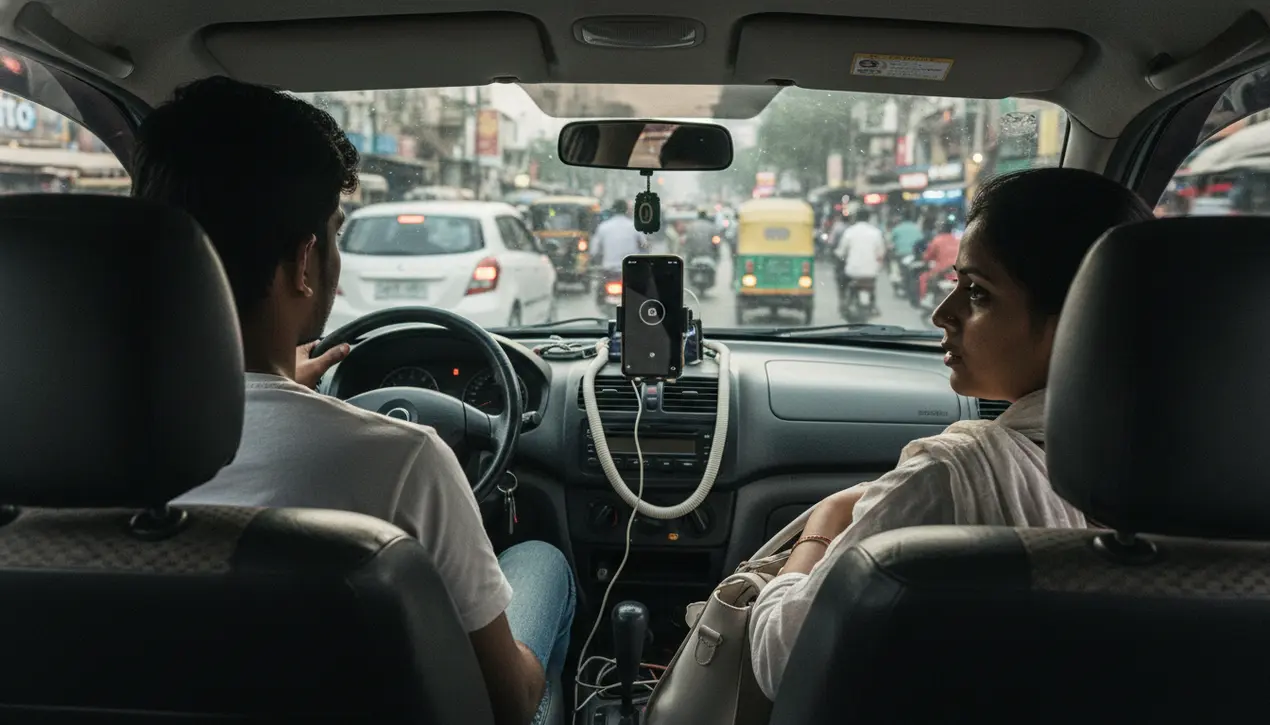
Othertransport & aviationElectric Mobility
Uber Pilots In-App Video Recording for Drivers in India.
AN
Andrew Blake
4 hours ago7 min read1 comments
Uber's quiet rollout of an in-app video recording feature for drivers across ten Indian cities feels like one of those technological shifts that's about so much more than just the feature itself. It’s a move that sits at the crossroads of safety, privacy, and the evolving social contract of the gig economy, a classic case study for anyone curious about how global tech adapts to local realities.On the surface, the premise is straightforward: give drivers a tool to document incidents during a trip, creating a verifiable record that could protect both them and riders from the disputes and, in worst-case scenarios, the safety hazards that can occasionally flare up in the confined space of a vehicle. This isn't a completely novel concept; dash cams are ubiquitous in many countries, and other ride-hailing platforms have dabbled in similar ideas.But Uber’s integrated, in-app approach is significant because it streamlines the process, making it a seamless part of the driver's workflow rather than an aftermarket addition. The choice of India as the pilot ground is particularly telling.The Indian market is one of Uber's largest and most complex, a vibrant, chaotic ecosystem where urban transportation is a daily negotiation. Here, the promise of enhanced safety resonates deeply.For drivers, who often operate in unfamiliar neighborhoods and at odd hours, the ability to record could be a powerful deterrent against fare evasion, verbal abuse, or physical altercations. For passengers, especially women who have long voiced safety concerns, it offers a potential layer of accountability, a digital witness that ensures their journey is being monitored.Yet, this digital panacea comes wrapped in a thicket of privacy concerns that cannot be glossed over. India is currently navigating its own data protection landscape with the newly minted Digital Personal Data Protection Act, and a feature that continuously records audio and video within a private vehicle plunges headfirst into this regulatory grey area.Where is this data stored? Is it on the driver's device or uploaded immediately to Uber's servers? Who has access to it, and under what circumstances can it be reviewed? The consent model is another prickly issue. While a driver can initiate recording, the passenger, a data subject, is necessarily brought into this surveillance environment without their explicit, prior consent for each recording—a scenario that legal experts and digital rights activists are likely to pick apart.The success of this pilot will hinge on Uber's ability to architect a system that is not just technically robust but also ethically sound and legally compliant. They will need to demonstrate transparent data handling policies, perhaps employing on-device processing and encryption that only allows footage to be accessed in the event of a reported incident, much like how an airplane's black box is sealed until it's needed.Furthermore, the company must invest in clear communication, ensuring both drivers and riders understand when and how recording is happening and what their rights are. If Uber can navigate this labyrinth successfully, the Indian pilot could become a blueprint rolled out across other emerging markets in Southeast Asia and Latin America, where similar dynamics exist.However, a misstep—a data breach, a high-profile misuse case, or a regulatory clampdown—could not only derail the feature but also inflict significant reputational damage. It’s a high-stakes experiment, one that will test whether a Silicon Valley giant can localize its solutions with the nuance and sensitivity that a market as vast and diverse as India demands. The outcome will tell us less about the technology of video recording and more about the future of trust in the platform economy.
#featured
#Uber
#in-app video recording
#pilot program
#India
#driver safety
#ride-hailing
#technology
Stay Informed. Act Smarter.
Get weekly highlights, major headlines, and expert insights — then put your knowledge to work in our live prediction markets.
Comments
Loading comments...
© 2025 Outpoll Service LTD. All rights reserved.